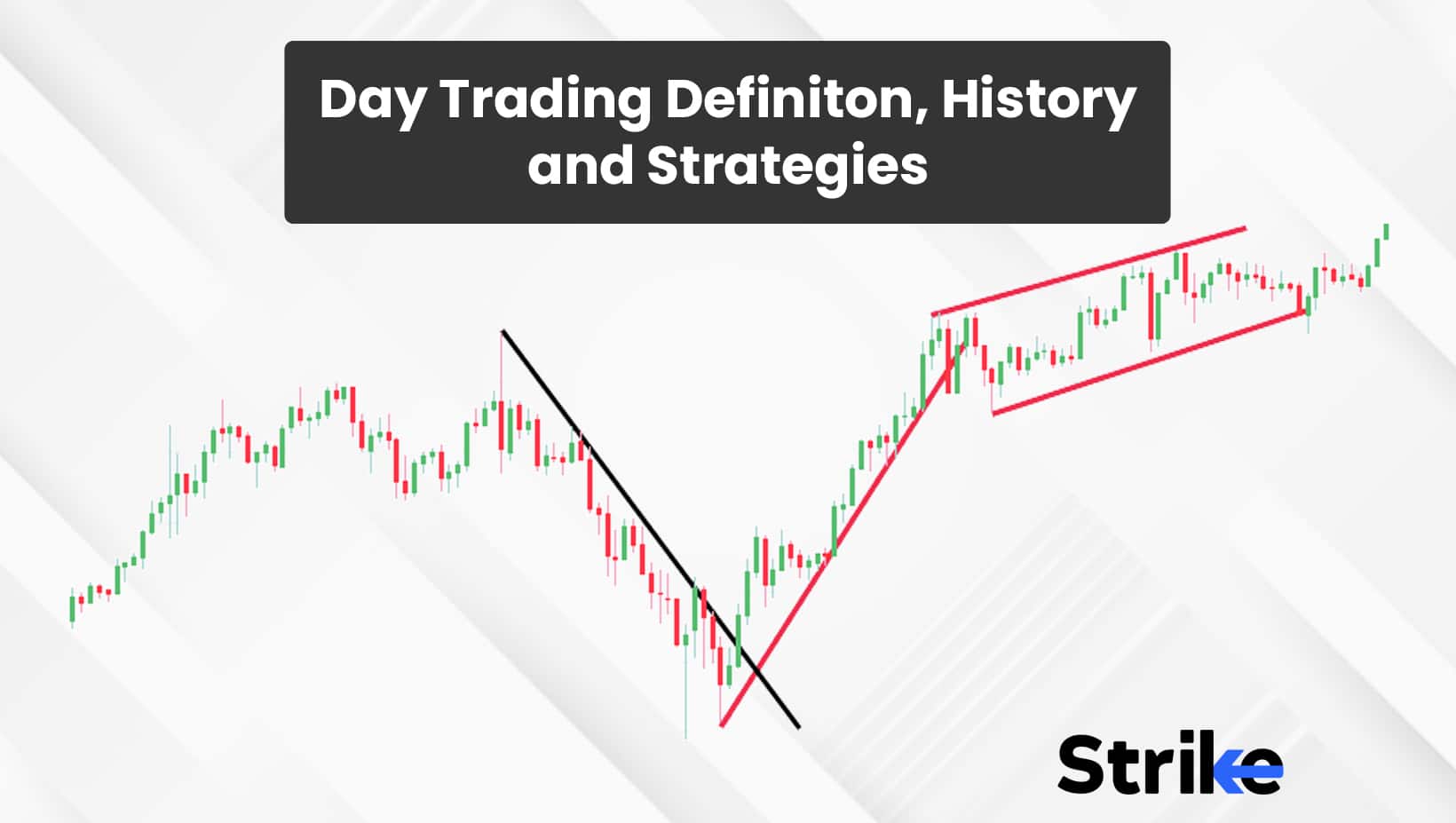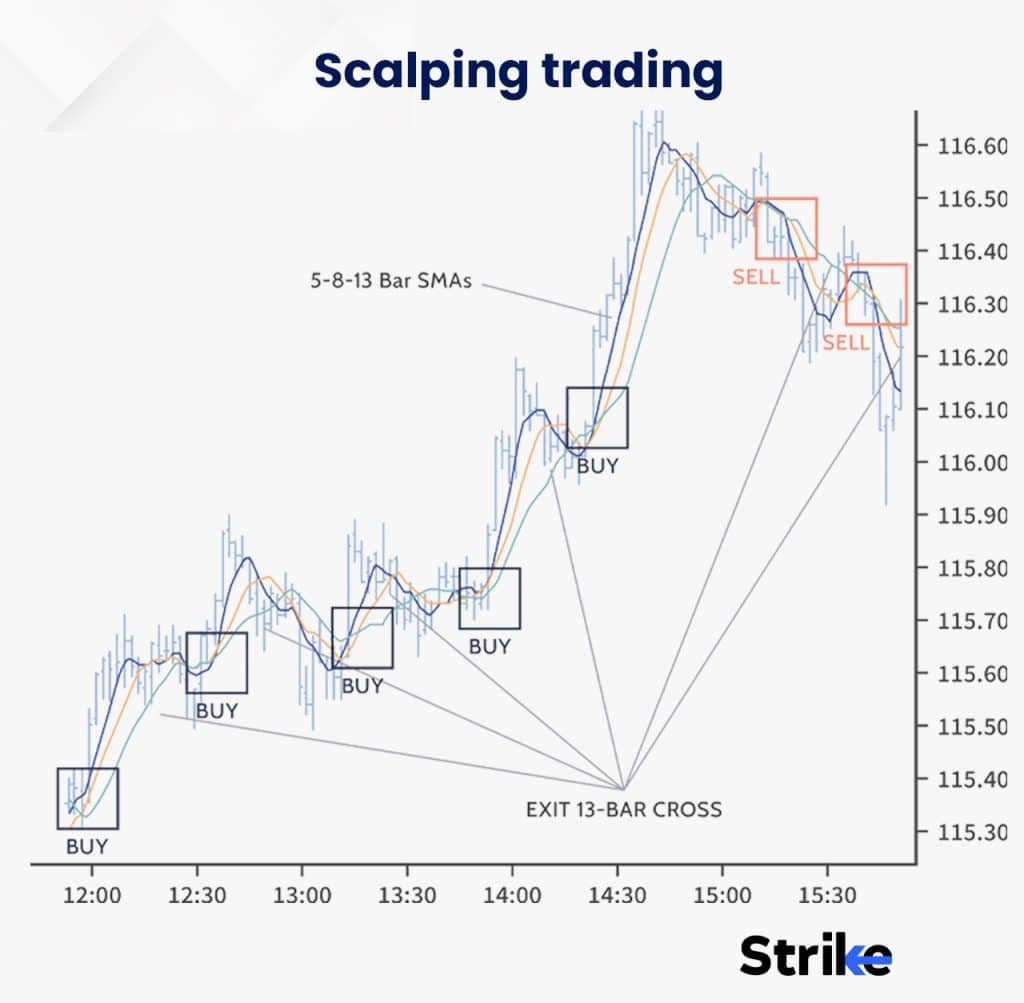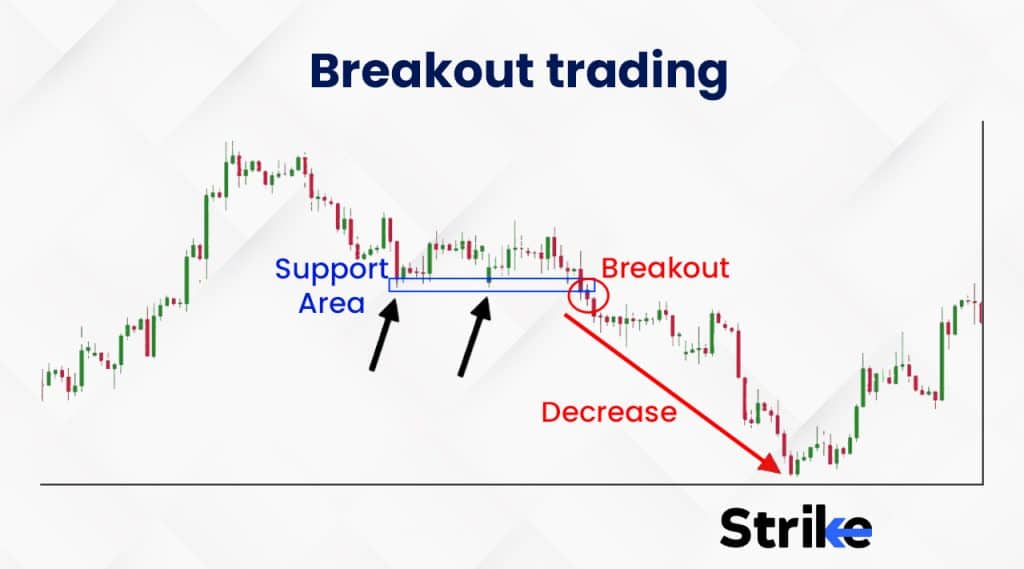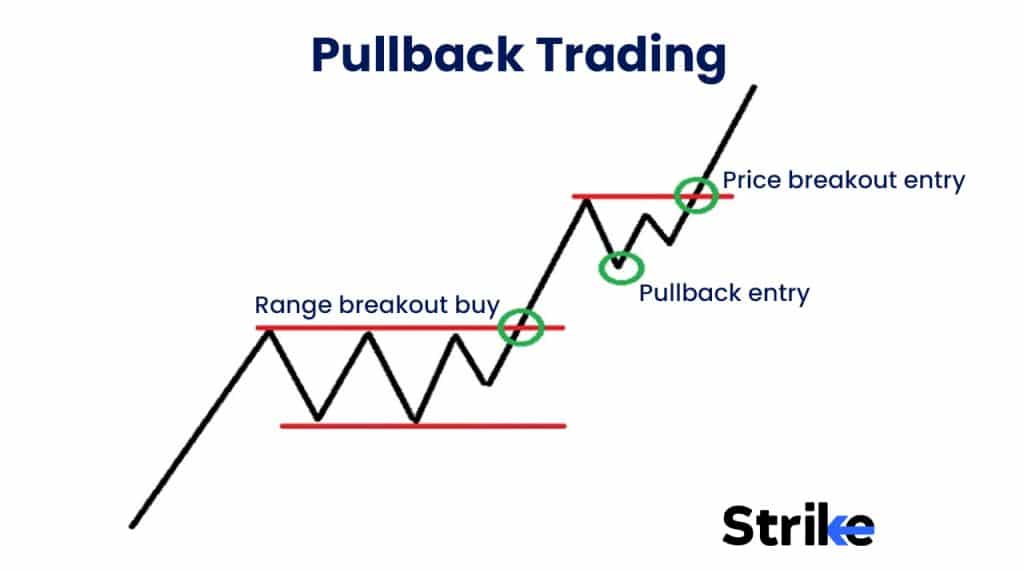
Day trading refers to the process of buying and selling financial securities within the trading hours of a day. Day trading exploits the price fluctuations that occur during a single day’s trading session to make profits for the day traders. Day trading focuses on trading strategies aimed at taking advantage of market inefficiencies. Day traders utilize technical analysis to predict price fluctuations, and day trading is predominantly seen in stock markets and foreign exchanges.
The history of day trading dates back to 1867 when ticker tapes began to be utilized for day trading. Back then, day trading had to be done through brokers. The ticker tapes helped brokers stay updated about the transactions that took place on the trading floor. Almost 100 years later, Electronic Communications Networks (ECNs) was created in 1971. ECNs made day trading even more straightforward, and it was not limited to brokers anymore. With the advent of the ECNs, even the ordinary person could undertake day trading, and day trading as a trading technique began to gain popularity.
To start day trading successfully in the stock market, traders require three basic skills, knowledge of the stock markets, access to capital, and some experience in trading in the stock market. Day trading is not a technique for amateurs to the stock market as a knowledge of the nuances of stock trading is needed to be a successful day trader. Day traders commonly employ five different strategies, including scalping, momentum trading, break-out trading, pull-back trading, and news-based trading.
When a trader purchases shares when the market opens and sells them before the market closes that day, it is considered an example of day trading. Day trading has three main advantages, such as offering the opportunity to make profits from a declining market, mitigating the risk of holding securities overnight as well as offering the opportunity to purchase securities with a margin balance.
The margin balance is a fraction of the total amount required to purchase the securities, which is maintained in the trader’s trading account as a deposit. However, day trading also poses three main disadvantages, including the risk of severe losses, the stress involved in day trading, and access to huge amounts of capital, which is part of day trading.
What is Day Trading?
Day trading refers to the practice of buying and selling financial securities within the trading hours of a day. Day trading is also known as intraday trading. Day trading is a technique that uses strategies based on the technical analysis of securities. Day trading focuses on making profits from the rapid price fluctuations that occur during a trading day.
Several traders also prefer it as it does not involve holding the securities overnight. Day trading is not a practice suited to beginners in the stock market as it requires an in-depth understanding of how it functions. Day traders also need to be well-planned and objective in their trading strategies. Day trading is very different from the conventional understanding of ‘investing’, as day trades often take place in a matter of just a few seconds.
Day traders build their trading strategies on news and other scheduled announcements, such as company statistics or earrings. Day traders watch the stock market prices closely to make profits through trades.
What is the history of Day Trading?
The history of day trading can be traced back to the late 1860s when ticker tapes began to gain popularity. Brokers used ticker tapes to stay informed about the transactions which were taking place on the trading floor. Back then, day trading was restricted to those who had access to the trading floors, and all trading had to be done through brokers.
The advent of Electronic Communications Networks in 1971 was a significant moment in the history of day trading. Apart from simplifying the trading process, it also made trading an accessible practice to the ordinary person. ECNs allowed investors and traders to purchase and sell securities online without being physically present on the trading floors. As a result, those interested in all kinds of trading, including day trading, no longer had to depend on brokers.
The advancements in ECNs in the coming years only fueled the popularity of day trading. Traders from all over the world could connect through ECNs and with all the significant brokerages worldwide. In addition, automated systems to match buy and sell orders, known as order-matching systems, were introduced in 1980 as part of the ECNs, further simplifying the practice of day trading.
In the late 1990s, the Internet started gaining increasing prominence when most households worldwide started using it. This phenomenon helped several small traders who could now easily access information such as price quotes. In addition, the advancements in the internet and technology helped day trading, a commonly used, full-fledged trading technique by 1999. Day trading continues to be utilized by skilled traders to date, with several strategies being used.
How to start day trading in the stock market?
In order to start day trading in the stock market, a trader must have three basic skills. The skills required to start day trading in the stock market are listed below.
- Knowledge of stock markets
To start day trading as a lucrative career, traders must have a sound knowledge of the stock market’s functioning. An awareness of the various technical analysis indicators and how to read their indications are also valuable for day traders. Through a basic understanding of stock trading, traders can read stock charts accurately. Day trading is a trading practice that involves careful and tedious reading and analysis of stock charts.
- Access to liquid capital.
Day trading is a practice that often requires a large amount of capital to make trades of considerable sizes. Day trading becomes profitable only when trades of a sizeable volume are made. Access to capital is there a requirement for day traders. Many day traders also prefer to use risk capital for day trading to prevent huge losses.
- Experience with trading in the stock market.
Some experience with trading in the marketplace is a valuable asset for day traders. Through trading practices other than day trading, too, a trader can learn about the various nuances of the stock market’s functioning. Such knowledge comes in handy when the trader takes up something as complex as day trading. In addition, the experience with the marketplace helps hone their abilities to use and read technical indicators better.
What are the different strategies that can be used in Day Trading?
There are primarily four different strategies that are employed in day trading. The four common day trading strategies are listed below.
- Momentum trading
Momentum trading is one of the most straightforward day trading strategies. Momentum trading involves analyzing the stock charts to identify the direction of the securities’ momentum and then making entry and exit positions based on the momentum. Momentum, in financial terms, refers to the rate at which the price of the security changes. Securities in financial markets can move in three directions, including upwards, downwards, and sideways.
Momentum traders base their moves on the direction of the momentum. Traders who adopt the momentum trading strategy look for securities whose prices are rising and try to sell them when the price peaks. Momentum-based day traders aim to capitalize on short-term uptrends and sell off the securities once the momentum peaks.
For example, trader, A buys 100 shares of a company at Rs 90 each. He bought these shares as his research and analysis led him to think that their prices were likely to rise. Let us assume that his analysis is correct and the prices start to rise. When the price reaches Rs 98 per share, from his research and analysis, A concludes that the momentum has peaked. So he sells off his 100 shares for Rs 98 each. The profit he makes of Rs 8000 are his earrings from day trading.
Momentum-based day trading has two main advantages, which are listed below.
- Helps traders make huge profits
One of the main advantages of momentum-based day trading is its potential to make huge profits for traders in such a short time. The profit potential of momentum trading is high.
- Helps traders capitalize on market volatility
Another significant advantage of momentum-based trading is that it focuses on capitalizing on market volatility. Using momentum trading, day traders can use the daily price fluctuations to their advantage.
- Scalping trading
Scalping trading or scalping refers to the day trading technique that aims to make profits through several small gains. Scalping involves making many trades in a day, in the range of 100s in a small time frame. In scalp trading, it’s not the size of the profits that is important but the number of wins. Scalp traders look for small price changes and resell the securities quickly to make a quick profit.

Requirements such as a live feed and a reliable broker are needed in scalp trading owing to the large number of trades that need to be made. Scalp trading is, thus, a tedious trading technique requiring a lot of stamina.
As an example of scalping, let us consider trader X, who plans to scalp off shares selling at Rs 60 each. To profit from scalping, he purchases 50,000 of these shares. Then as opportunities crop up, he sells them at Rs 60.25, Rs 60.50, and Rs 70, making small profits with each trade. All these small profits add up to a considerable amount by the end of the trading day.
The three main advantages of scalping are listed below.
- It reduces risk exposure.
Since scalp trading involves trading within a short time frame, it reduces exposure and the risk of loss through an unfavourable event.
- It increases the chances of winning.
Smaller wins are more accessible to obtain and more frequent than significant wins. This makes scalp trading a lucrative technique.
- Break-out trading
Break-out trading refers to the trading technique that looks at levels in the price chart that security can break out of and makes trades at that point in time. Break-out trading utilizes fundamental or technical analysis to make entry and exit positions when the security’s price moves outside its graph line. The logic behind break-out trading is that when the security’s price, which has been resistant to move beyond a certain point in the chart, can break out of that level, the trader can assume that the move will continue in that direction and make trading decisions based on that assumption.

Break-out strategy believes that when assets move beyond a level (resistance level) or below a level (support level), that trend will continue for some time. In intraday trading that uses the breakout strategy, the identification of the break-out points, the entries, and exits all take place within the trading hours of the day.
For example, let us consider trader A, who analyses the price chart of a stock XY. Through his research and analysis using technical or fundamental analysis, he understands that the price hasn’t increased beyond Rs 80 per share for an extended period. So, when the price break-outs of the resistance level reach Rs 81 each, A decides to apply a break-out strategy. He purchases 100 shares at Rs 81 each. His break-out strategy is based on the assumption that once the price breaks out of the resistance level, it will continue to rise.
Let’s assume that the price does increase. When the price peaks at, say, Rs 92 per share at the end of the trading hours for the day, A sells off the shares for a profit. A decides on his exit point based on the technical or fundamental analysis he utilizes.
The two main advantages of using the breakout strategy are listed below.
- It offers the possibility of making huge profits.
Since break-outs signal the beginning of a new price trend, huge profits can be made by trading on this strategy.
- It involves limited risk.
Intraday break-out trading involves limited risk as the exposure is only for a short period.
- Pull-back trading strategy
Pull-back trading strategy that makes use of the minor price declines in an advancing price trend to make profitable trades. The pull-back trading strategy views pull-backs are perfect buying opportunities. A pull-back refers to a minor setback or decline in a stock price’s uptrend.

Since these pull-backs are shortlived, traders can use this opportunity to buy securities and sell them off later, once the uptrend is back on track. In the case of intraday trading based on a pull-back strategy, the buying and selling occur within the hours of the trading day.
For example, let us consider trader Z. Through the technical indicators he uses, he concludes that a stock ABC following an uptrend is experiencing a pull-back. The share price drops from Rs 95 per share to Rs 91. Z sees this as an excellent opportunity to buy ABC and buys 50 shares at Rs 91 each.
The pull-back is short-lived, and the uptrend gets back on track. At the end of the trading day, the price stands at Rs 98 per share, and Z sells these shares at a profit.
The main advantage of the pull-back strategy is that traders can utilize the pull-back to make entries in uptrends at a lower cost.
- News trading
News trading refers to the trading strategy around planning entries and exits around the news affecting market volatility. News trading focuses on capitalizing on the price fluctuations brought on by news and scheduled announcements, including corporate earrings and statistics, economic reports, and interest rate reports. News is of two types, periodic or scheduled and unexpected news.

Periodic or scheduled news includes scheduled announcements and reports like company earnings reports and interest rates. Unscheduled news can include unexpected events that impact the stock market, such as natural disasters, wars, geopolitical crises, etc. The market reacts to the news through a change in the price of the assets. Day traders use this volatility to plan and strategize their entry and exit points.
As an example of news-based trading, let us consider the example of trader X. From his research and sources, he came to know that a scheduled company earnings report is going to create a soar in the company’s stock as its performance was much better than expected.
So, he decides to buy 100 shares at Rs 90 each. As soon as the earnings report is released, the stock prices start to advance. Before the trading hours close for the day, the price stands at a 40% increase, and X sells the shares at a profit.
The two main advantages of news trading are listed below.
- It takes advantage of the market sentiment.
News trading is a strategy that fully capitalizes on the prevalent market sentiment, which can yield huge profits.
- It helps to make the best of unexpected news.
Since news trading capitalizes on news that impacts the marketplace, it can be used to exploit even unexpected news that otherwise affects the market badly.
What is an example of Day Trading?
As an example of day trading, let us consider trader X. As X is a day trader, he uses technical indicators to monitor market trends constantly. When he senses that a particular stock S’s price is going for an uptrend, let us assume he purchases 100 shares of S at Rs 100 each.
As per his predictions, the prices do take on an uptrend, and the price peaks at Rs 110 per share before the end of the trading hours for the day. The technical indicators that X uses inform him of when the prize peaks, and he sells the shares at Rs 110 per share. X thus purchases the shares for Rs 10000 and sells the shares for 11000, making a profit of Rs 1000 daily.
Now, let us consider a real-life example.

Above is a chart of reliance industries for a particular day. Here, you can see that the price goes through ups and downs. Let us suppose you buy the share during the drought just after 1 pm, you can gain a profit if you sell it just before close as the price has climbed.
What are the advantages of Day Trading in the stock market?
The five main advantages of day trading are listed below.
- Helps to limit risk exposure
One of the most significant advantages of day trading is that it helps to limit risk exposure. Moreover, since it does not involve holding the assets overnight, intraday significantly reduces exposure time.
- Profit through short selling
Short selling in intraday trading helps to make profits even when the market prices decline. Short selling is a trading technique involving borrowing shares that are about to decline and then selling them. Once the price drops, the trader purchases the shares at a lower price and returns them.
- Avoid tedious fundamental analysis.
Day trading can be done successfully using technical analysis and technical indicators. Intraday traders, thus, do not have to undertake the long and tedious fundamental analysis, which is more time-consuming.
- Make purchases through margin balance.
Another important advantage of intraday trading is that it allows traders to make purchases with the margin balance amount. The margin balance is only a fraction of the total amount required to purchase the asset in the form of a deposit. This means that traders can buy assets in intraday trading even without having the entire amount at the time of the purchase. This feature is handy for traders making huge trades.
- Earn regular income
Intraday trading can earn traders a regular income when undertaken properly with sufficient research, analysis, technical indicators, and objectivity.
What are the disadvantages of Day Trading in the stock market?
The four main disadvantages of intraday trading are listed below.
- Involves fewer chances of earning money through one big trade.
One of the main disadvantages of intraday trading is that the probability of making earnings through one big trade is less. As a result, intraday traders usually need to undertake several small trades to make sufficient earnings.
- Involves tedious, meticulous, and stressful monitoring and trading
Intraday trading can be tedious and stressful to traders as they have to carefully monitor the market changes throughout the working hours of the marketplace and be objective in the trades they make.
- Involves the risk of incurring huge losses
Intraday trading can also be risky and involves incurring losses, particularly when the technical indicators are not used correctly. In addition, traders new to intraday trading may also face challenges owing to their lack of experience and skills.
- Requires access to sizeable amounts of capital
Intraday trading may also require access to large amounts of capital to make significant trades. Therefore, intraday trading is most profitable only when trades above a certain size are made. Otherwise, the trader may have to make several tedious small trades.
Is Day Trading for beginners?
No. Since day trading requires knowledge and experience in the marketplace and trading, it can be difficult for beginners to be successful day traders. Moreover, while starting out, many intraday traders find it challenging to make profits due to a lack of skills. However, with sufficient market research and analysis and proper utilization of technical indicators, even beginners can be successful day traders.
Is Day Trading worth trying?
Yes, day trading is worth trying depending on the trader and his investment goals. It also depends on his knowledge of the marketplace and experience. Traders with more experience are better equipped to make the objective decisions that intraday trading requires.








![85 Common Stock Market Terminologies for Dummies [Updated List for 2026] 14 85 Common Stock Market Terminologies for Dummies [Updated List for 2025]](https://www.strike.money/wp-content/uploads/2025/04/Popular-Stock-Market-Terms-for-Beginners-Banner.png)










No Comments Yet.